
 |
|
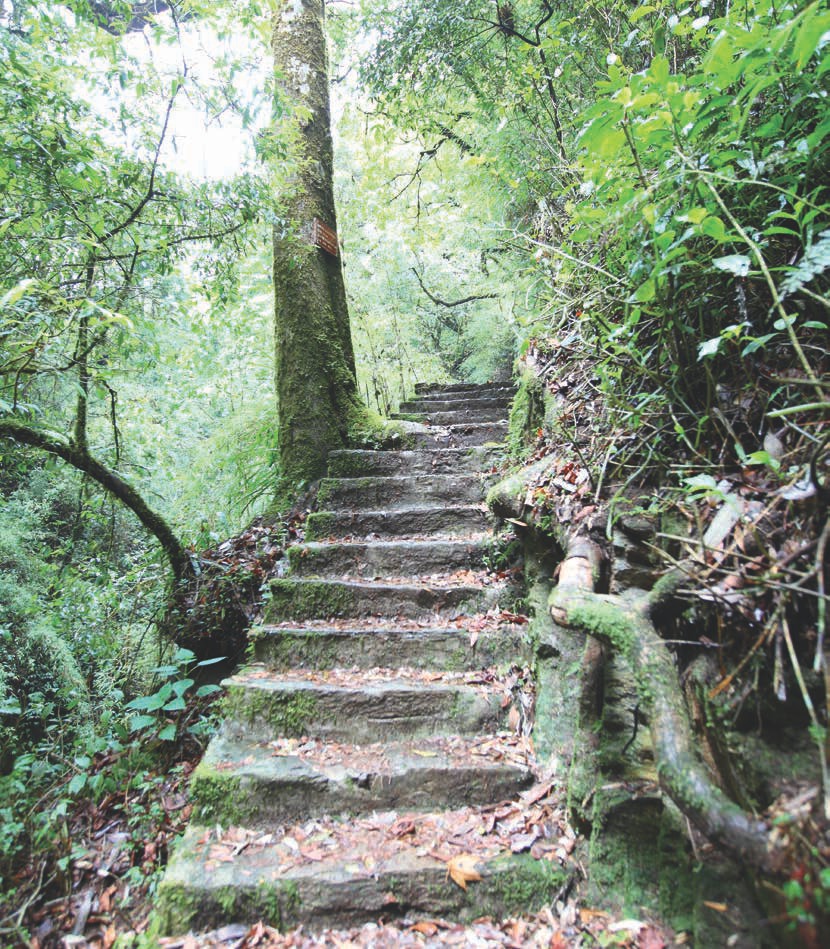
Our recent trip to Yunnan was filled with shared Tea wisdom, dancing, the forging and strengthening of friendships, enjoyment of great meals, triumph over a few challenges (ahem, food poisoning!), deep connection with Nature and various other magical experiences. In the (glossy, colorful) pages of this month's magazine, you'll find accounts of a few of these happenings, such as Wu De's telling of the hike to the King Tree and my narration of a local tea ceremony. However, since so many people have been asking us to "tell all about the trip", I thought I'd briefly share a few other stories from the journey.

The day after our hike to the King Tree, we were each presented with a tray of tea leaves that had been picked the day before and allowed to wither. The withering process had reduced their moisture content, making them more pliable and readying them for rolling. We were instructed on how to roll, shape, knead and 'rest' the leaves, and when to apply more or less pressure. We were told that the science of making tea by hand isn't anywhere near so important as the intuition behind it, and we knew instinctively that the doing was only part of it. For the most part, we were more interested in being and in sharing that energy with all of you through the end result - this month's tea.
As we rolled the tea, clouds flitted over the sun. Our hostess sang ancient songs about friendship, the moon and Tea. One of the Chinese travelers on the trip with us began to play a traditional song about tea harvesting, and some of us sang songs to the leaves. During each time for the leaves to 'rest', I meditated over them, putting in metta (loving-kindness) for all who drink their brew. I can't speak for everyone else, but from the looks of focus and compassion on their faces, I'm pretty sure they did the same.
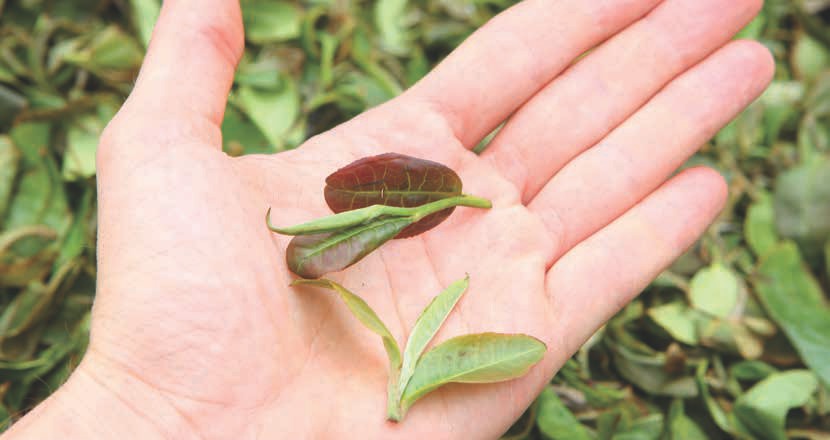
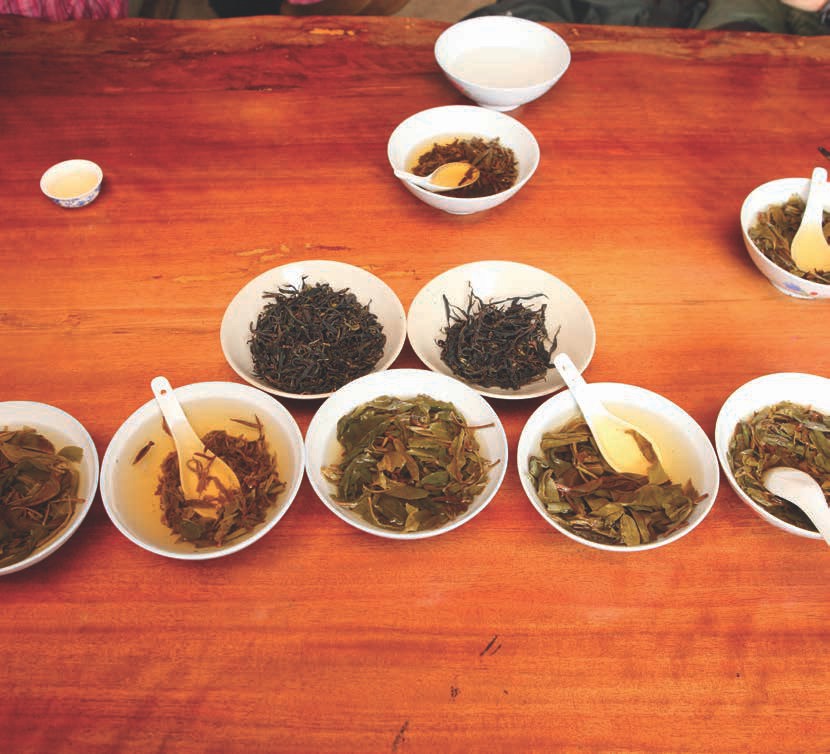
We were torn between two options. One had amazing Qi, but not much aroma and aftertaste. The other had an enchanting aroma and flavor, but weaker Qi. With feedback from the group, Wu De played around with various blends, adjusting toward the perfect balance of aroma, flavor and Qi. We then perfected the blend the next day after comparing it to the illustrious 2010 cake, which we of course brought. Those lucky enough to get one of these limited edition 2014 cakes will be blown away! (As I write this, the 2014 cakes are being prepared. When they're available, we'll fill you in on all the details!)

Part of the trip was fairly 'touristy', and one day in particular had a full schedule. Some of the events were, well, not so much what a Chajin looks for while in Yunnan, so we ended up deciding to change course to see what would happen unexpectedly. It ended up being a great decision.
We went to a small factory up in Dali, where four or so workers were pressing sheng puerh cakes. They showed us their process - measuring the leaves, placing them in a metal cylinder, steaming them, shaping them in a piece of cloth, pressing them with a machine, removing them from the cloth and putting them on wooden racks to dry. Off to one side, we saw large, cylindrical stones. "What about those?" some of us asked. Wu De explained that they were traditional stone presses, used for many years before the hulking metal machines were invented, and that it was traditional to dance atop one to get the puerh cake pressed just right.
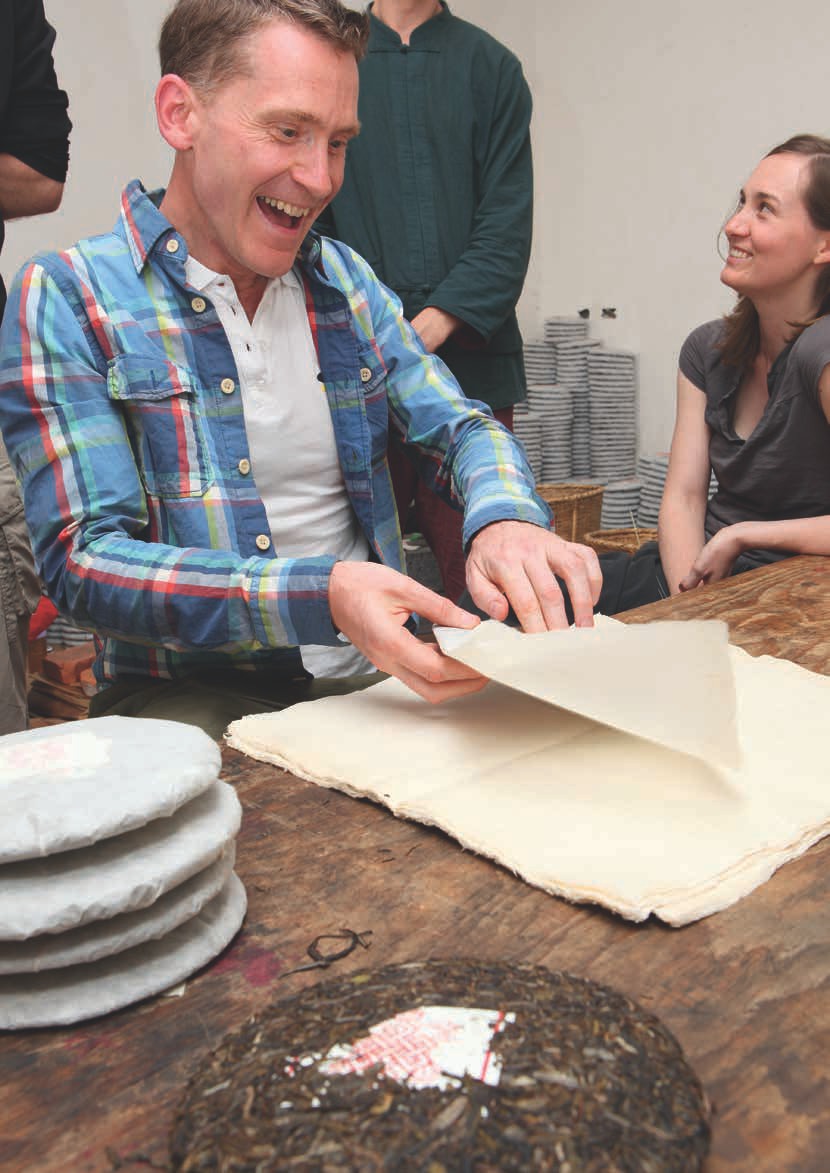
Immediately, we knew: We had to press puerh cakes! With a little smooth talking, fellow traveler Mr. Liang (of Wushing Publications) arranged it for us. We cupped a few teas to select the raw material. We selected nei fei and nei piao (the papers that get pressed into the cakes and placed into the wrappers), all sharing the same Buddhist symbol for our nei fei (inner trademark ticket) and selecting one of personal significance for the nei piao (outer trademark ticket). We went through the same steps as the workers did; only we steamed the leaves twice and pressed them under the stones ourselves (dancing to get them 'just right') instead of compressing them with a machine. And after we left, Wu De created beautiful paintings for each of our wrappers.
Although this trip filled me with many fond memories and left me with more than a few souvenirs, I can't think of a better way to remember it than the cakes we made, which we will treasure for years to come. They're a symbol of the whole trip, of our journey together and of our connection to each other and to Tea. When mine is aged, I hope to share it with other tea lovers in many magical tea sessions!
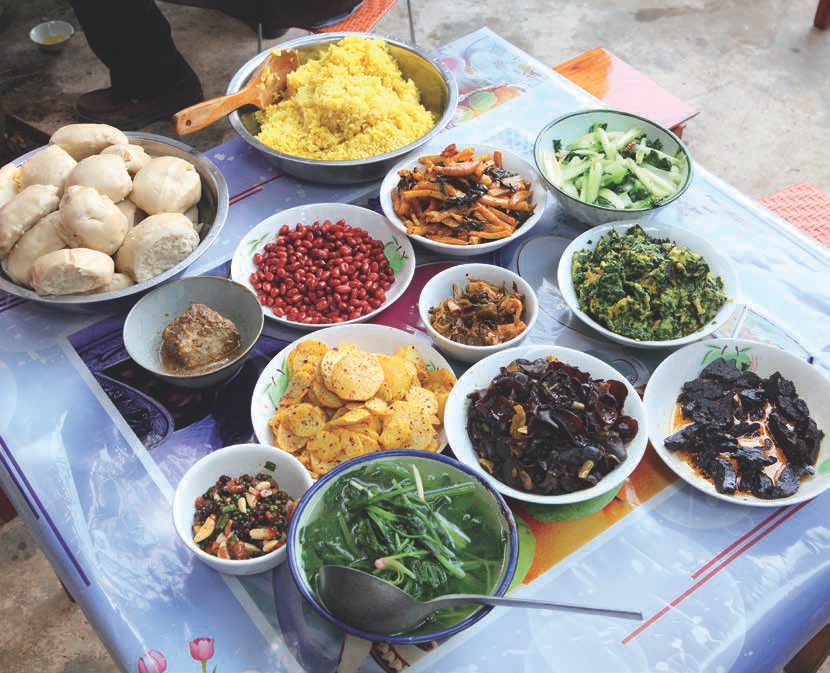
This trip was more "Tea, Pray, Compassion" than "Eat, Pray, Love". Still, we managed to get our fill of Yunnan's (usually) fresh, delectable vegetarian cuisine. Especially satiating specialties included freshly handmade noodles, puerh steamed buns, all sorts of potato dishes, tofu like we've never had it before, soups laden with leafy green veggies, walnuts we cracked ourselves and dipped in dark local honey, peanut soup, a sort of "Yunnanese salsa" made with super-fragrant seed pods from a local tree, a few dishes spiced so hot that it hardly mattered what was in them besides the chili peppers, and rice scented and colored with the yellow flowers I mentioned in this month's article on the Ku Chuong tea ceremony.
All the wonderful meals were starkly contrasted with a couple bad ones. Still, the food poisoning was (for me, at least) a fair price to pay for the great joys of (most) Yunnanese food!

Shopping is not an especially deep activity, but we enjoyed the heck out of some shopping while we were on this trip. Some of us found antiques. Others bought gorgeous, handmade clothes. Shane and I searched high and low for a good gift for Joyce, and found a few things she loved. I also picked up some handmade embroidery, an old bronze Tibetan necklace bearing a large spiral, and a handmade paper book, as well as some handmade felt bags bearing Buddhist symbols (which I'll use to store tea and smaller teaware). We even found some new pillowcases for the kitchen in Tea Sage Hut, so the next time you visit and join us for a meal, you'll be sitting on a little piece of our journey.
One of the most touristy things we did was to visit a mountain, lake, 'jubilee show' and spring that Chinese tourists flock to. We were wary beforehand, but it was kind of awesome.
We first took a bus and then aerial tramway up to the glacier-topped peak of a high mountain. For one of the Taiwanese women with us, this ascent was her first encounter with snow, and she cried with joy (as well as, perhaps, a bit of fear from the jolt our little cable car gave). At the top, we were surrounded by fog, and could not see much beyond the droves of tourists snapping photos of themselves and each other. We walked to the edge of a deck, away from the crowd, and Tien Wu began to sing to the mountains, the Sky and Mother Earth. Some of us joined along in song, and suddenly the clouds parted. Light, glorious light, and a view of the surroundings made us gasp with elation. We could see the snowy, cloud-dappled mountains in the distance, the bluish glacier all around our little platform, the swirling clouds and glittering sun up above, and the lush valley down below. We were hesitant to leave such a place, and very glad we went in the first place.
After returning to the valley below a little late, we took another bus ride to a lake. Its name is Blue Moon Valley Lake and, as if to flaunt its adaptability, it shimmered brilliantly with the high noon sun. We walked to a more remote area of the lake and lay down to bask in the warmth from above. We sang a song to the spirit of the water, a sort of call-and-response chant that could go on and on forever. Eventually, it was time to go, and we shuffled off to the bus again for...
The jubilee show. I know what you might be thinking: Bo-ring! Actually, it was pretty enjoyable. The earnestness of the performers was endearing, and some of the dance numbers were kind of epic. Also, it had a scene about tea plucking, which was undeniably cool.
Next stop: the spring. This spring is said to be inhabited by an ancient Nature God, whose lower half is made up of snakes. Most of the Naxi people of the area worship Nature, so behind the spring there was a temple devoted to it and to Nature. We each drank from the spring. The water had incredible Qi and slaked our thirst immediately. I made a wish for the worldwide realization of the oneness of all beings through water (something that is becoming more and more likely as water becomes an increasingly valued-yet-misused resource in this world), and tossed a Taiwanese coin into a wishing well. It landed right in the center of a vessel in the center of the well. I have the feeling it was more than a lucky toss!
Then, I walked with Steve to the temple. When we entered the stone gateway, we found that Tien, Mia and Dawn had beaten us there... and they were beating on a huge drum at the top of a long flight of stairs ahead of us! After some drumming, a few of us meditated, while others learned about the local religion through murals on the walls and through talking with our local guide. In the Naxi religion, there is great importance placed on respect for Nature, and an ancient myth outlines a story of retribution and rebalance after an episode of disrespect toward Nature. It was a beautiful reminder of how Nature provides for us and how we must strive to live in harmony with Her for our own good and for the future of our species and our home.
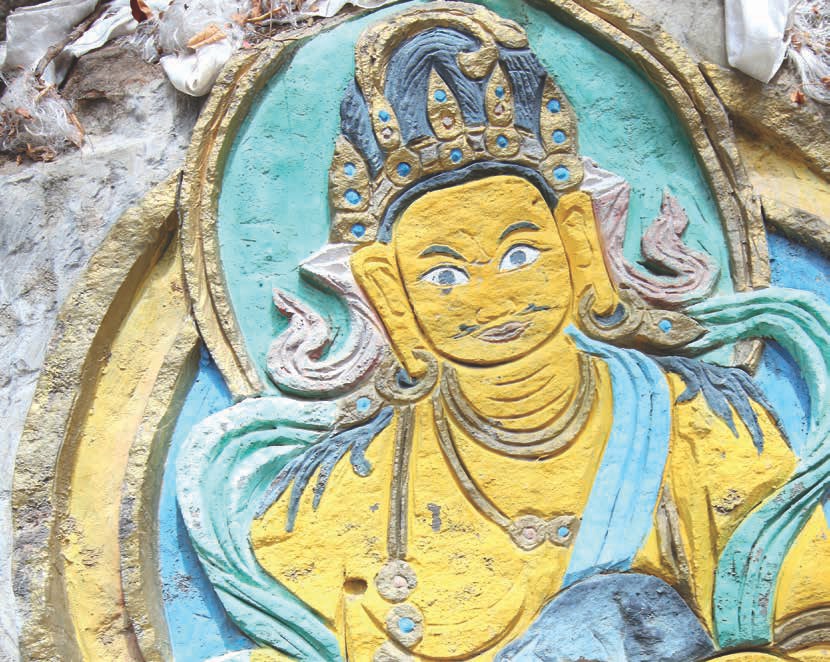
In Shangri-La County, we visited a compound of Buddhist temples. For me, this was one of the most profound parts of the trip. From watching the graceful birds soaring at the entrance to savoring my last moments of meditation there as I walked away with intense focus on each step, it was a journey that merged the physical with the spiritual, seamlessly and beautifully.
Although the grounds are rather small, there are many packed buildings in the compound, so to avoid getting overwhelmed, we each had to narrow down our focus a bit when we got there. The two most ancient temples there pre-date the advent of Buddhism in the area. They were originally temples for the Tibetan shamanic religion called "Bon". Although I checked out a few other buildings and saw some beautiful works of art and places of peace, these Bon temples were the ones I mainly gravitated toward.
My interest was rewarded with a well-timed visit to one Bon-turned-Buddhist temple. I entered at the same time as the monks, checking first to make sure I was welcome to join. The space was still. The monks sat down to chant from ancient books. I stood and took it all in.
Then, I walked around the periphery of the great hall, observing each of the large murals that donned the walls. Having seen so many Buddhist paintings like these in India, Taiwan and elsewhere, I felt I had reached an impasse with them that could only be surmounted by study and intellectual understanding... but my time in this temple proved me wrong. I began to understand these images more deeply on an energetic level, to understand experientially their messages about impermanence, the non-dual nature of creation and destruction, the meditative mind and other lessons that can't be put into words without losing their real meaning. I contemplated these realizations for some time, eyes closed, taking in the chanting of the group of monks. It was a transformative experience, and one for which I am grateful.
What came next was a surprise, though perhaps it shouldn't have been. When I continued to circumambulate the room, a senior monk approached me with a kind smile. He asked me about my practice, and I told him that I drink and serve tea as meditation. As we spoke about meditation and Buddhism, two young monks emerged from a room to the side of the main hall to change the large candles that lit the room - a symbolic shift, the monk told me. We spoke more, and then the two monks emerged again with buckets of tea. They ladled the tea into the chanting monks' bowls, and then invited me to drink some as well. I was ushered into the room at the side of the temple. In it, there was a large, coal-heated stove. Butter tea boiled away in a large, cauldron-like pot. A rambunctious monk with a toothy grin scooped some tea into a simple bowl and handed it to me with a chuckle. Steam rose from the bowl and dispersed into the air. Smoke rose in curls and wafted through shafts of light on its way up along the high wall, toward a gap in the lofty ceiling. I took a sip of the tea. It was viscous and strong, salty-sweet from the butter. It was made with love and it was just what my heart needed in that moment. The bowl emptied, I thanked the monks and stepped back into the main hall, just in time to see their lunch being served - rice heaped into the same bowls they had used for tea. I thanked the senior monk, took a moment to let the experience seep deeper into my memory, bowed and left...
Returning to Taiwan, we each felt that we were not the same person who had left ten days before. We had learned so much from this journey, and were eager to share these lessons with others through our stories and (most importantly) our tea. In the days since, we have begun to integrate what we experienced in Yunnan, and will continue to do so for many months to come. We also began a bit of planning for our next trip: a visit to Wuyi in April of 2015. We hope that more of this growing tea family can join us, and can gain deeper insight and wisdom through the experience.

